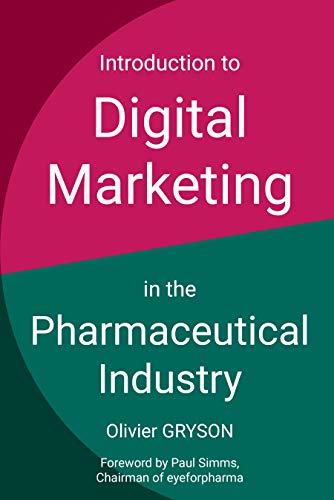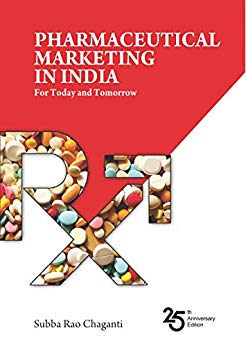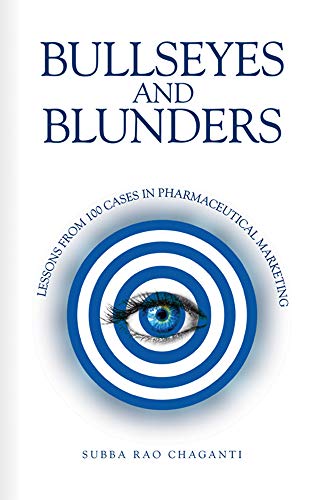India is the world’s largest supplier of generic drugs. According to the Indian Brand Equity Foundation (IBEF), the Indian pharmaceutical industry supplies more than 50% of the global demand for various vaccines, 40% of generic demand in the USA, and 25% of all medicines in the UK. In 2017, the pharmaceutical sector in India was estimated to be worth US$33 billion. The Indian pharmaceutical market grew by 10% year-on-year in February 2019.
During the 2019-2024 forecast period, the E-pharmacy market is projected to grow at 15.2%.
The consulting firm EY in its report “E-pharma: delivering healthier outcomes” estimates the total addressable medicine market for E-pharmacies to reach US$18.1 billion by 2023 fromUS$9.3 billion in 2019 at a CAGR of 18.1%.
The growth of the E-pharmacy market is attributed to the rise in population, rising chronic diseases, a steady increase in internet penetration, and smartphone ownership. Access to online and web-based services is one of the most important demand drivers.
About 1.5 million people are added to the Indian population each year. It is estimated that by 2022 India will become the most populous country- and the patient pool is expected to rise significantly over the next decade.
Draft Rules on E-pharmacy
The Ministry of Health and Family Welfare, vide its notification G.S.R. 817 (E) dated 28th August 2018, released the draft rules defining the sale of drugs by E-pharmacies as amendments to the Drugs and Cosmetics Rules, 1945 (“Rules”). The government plans to introduce the new rules in the first 100 days of its second term.
Key points from the draft rules
Licensing: Any person intending to conduct a business of E-pharmacy will have to register with the Central Licensing Authority (CLA) by submitting all information as per Form 18AA along with a registration fee of Rs. 50,000 to distribute, sell, stock, or exhibit drugs through the E-pharmacy portal. The CLA is a licensing authority appointed by the Union Government under the Drugs and Cosmetics Rules, 1945. E-pharmacy will be granted registration only if the web portal is located in India and is under the charge of a registered pharmacist.
The CLA may grant the registration to the applicant through Form 21 AA under Rule 67N with a validity of 3 years if all provisions of the applications are met.
The registration granted through Form 21 under Rule 67N can be renewed if the registration holder submits Form 18AA along with specified documents accompanied by a fee of Rs. 50,000.
The registered E-pharmacies will be listed on its website allowing consumers and other stakeholders to verify their status.
Privacy: Online pharmacies are required to keep patient details confidential. However, the E-pharmacy registration holders are duty-bound to disclose the information to the Central or State government if and when required for public health purposes. The rules are on the lines of the provisions of the Information Technology Act, 2000 (21 of 2000), and the Data Protection Bill 2018.
Advertising: E-Pharmacies are prohibited from advertising any drug on radio, television, the Internet, or print or any other media for any purpose.
Restrictions: The registration holder is prohibited to sell the following through their E-pharmacy business:
- drugs that are covered under the Narcotic and Psychotropic categories as per the Narcotic Drugs and Psychotropic Substances Act, 1985 (61 of 1985), and
- tranquilizers and the drugs as specified in the Schedule X of Drugs and Cosmetics Rules, 1945
It is imperative to keep a check on illegal pharmacies online.
Even in the USA, there is no proper mechanism in place to monitor and regulate the quality of drugs imported by patients in America. Many individuals across the country often try to procure cheaper drugs from Canada through their online pharmacies.
A 2017 study by the National Association of Boards of Pharmacy (NABP) found that 54 out of 108 (50%) online pharmacies in Canada claiming to sell Canadian drugs actually sourced their products from India or a combination of India and other countries, such as Hong Kong and Singapore; meaning many likely didn’t go through stringent quality control.
They also had some unidentified sources and origins of distribution that increase the likelihood of counterfeit, adulterated, and misbranded products. None of the websites required a valid prescription and 29% of these online pharmacies were selling controlled substances.
The board found 80 websites (74%) that distributed medications had not been approved by Health Canada.
The National Association of Boards of Pharmacy (NABP) now has developed the Verified Internet Pharmacy Practice Sites (VIPPS) program to gain consumer confidence and make a clearer distinction between legal and illegal sites.
The safe.pharmacy website was created to educate the public on medication safety.
The US Food and Drug Administration (FDA) had started a national campaign to create awareness of the dangers of buying prescription drugs from fraudulent online pharmacies.
A similar campaign is required in India to create awareness.
Source: FDA.GOV
Risks of Unregulated E-Pharmacies
- Fake prescriptions: There is currently no system in place to verify and confirm if the medical prescription submitted to the online pharmacy is genuine. Such transactions are prone to fraud as quacks or fake doctors may also prescribe medicines to gullible patients. Some people may present old prescriptions or forged prescriptions to buy medicines online. The Medical Council of India through its Code of Medical Ethics mandates physicians to display the registration number accorded to them on the medical prescription but very few physicians actually follow the rule. Also, many registered doctors details are not updated on the MCI register. In the USA, most prescriptions issued by doctors are E-prescriptions and are issued directly to the pharmacist through electronic transmissions.
What is an E-prescription?
An E-prescription is a replacement for handwritten paper prescriptions and uses electronic prescription technology a standard that allows healthcare professionals to electronically send prescriptions to the pharmacists. Countries such as the United Kingdom and the USA are making greater efforts to implement e-prescriptions and go paperless.
- Illegible handwriting on prescription: It is difficult for most patients to understand the handwriting of doctors. The Indian Medical Council regulations require doctors to write legibly. Even the courts have ruled in the past ordering medical practitioners to write legibly. Under the current draft rules, prescriptions of the registered medical practitioners written by hand are allowed. Most doctors give out prescriptions with handwriting that is not legible. The local pharmacist is able to understand the text due to his experience with such writing, but an online pharmacy may find it difficult to decode the same if it is from a photo or a scan. This can result in dispensing the wrong drugs to patients leading to serious consequences.
- Delay in deliveries: There could be unforeseen delays in the delivery of some drugs. There is no assurance that the package will arrive undamaged. In countries like India, either extremely hot or extremely cold weather may cause changes to the product.
- Delivery of wrong drugs: There could be cases where the wrong drugs are delivered, albeit inadvertently.
- Counterfeit drugs: Sometimes illegal and unregistered online pharmacies send outdated, counterfeit medications or substitutes.It is important to check with the regulatory authority if the online seller is registered and genuine. The United States Trade Representative (USTR), in a report on IP protection and review of notorious markets for piracy and counterfeiting, stated that 20% of all pharma products sold in India are counterfeit.
- Abuse: It is possible for people to order drugs like painkillers and antibiotics by misusing prescriptions leading to drug abuse, addiction, and resistance.
Advantages of E-pharmacies:
- Availability: At times, consumers may not be able to find the medicines they need at a pharmacy closest to their location. E-pharmacies can provide a solution as they are able to stock a much larger number of prescription medicines and also maintain a larger inventory as compared to a local pharmacy.
- Costs: E-pharmacies can provide medicines at up to approximately 15 to 20% lower costs compared to local pharmacies. This is due to several factors including:
- lower operating costs on the Internet
- transparency in pricing
- higher competition amongst the players in this sector
- elimination of middlemen such as distributors, stockists, etc.
- lower procurement costs due to volume-based purchases
- Reach: Due to a bad distribution network and the lack of proper storage facilities, there is a shortage of pharmacies in rural and remote areas. E-pharmacies allow patients living in such areas especially the disabled and elderly to easily obtain medicines, information, and services.
- Convenience: In some areas, pharmacies may not be close by or easy to access. E-pharmacies can deliver the medicines to your doorstep at the click of a button.
- Price Comparison: At the local pharmacy, prices are usually fixed and close to the Maximum Retail Price (MRP). Due to lower operating costs and higher competition, E-pharmacies give the consumers the flexibility to compare prices and choose from multiple suppliers.
It is important to develop a robust regulatory policy that will prevent the risks described and address the motive of providing simple and convenient access to safe medicines online.
__________________________________________________________________________________________________________
Also read: Medical Tourism, Telemedicine, Quackery and Rural healthcare.
Exploring the realms of Pathology in India: a revelation
___________________________________________________________________________________________________________
(The views expressed by the author in the article are his own)
Sign up for the QuackTrack.org newsletter below!


















Indimedo onlinepharmacy
September 14, 2022 at 2:11 pm
I really appreciate the author for sharing such a helpful or informative article with us. I like your site and love to read these kinds of articles. Thanks for sharing with us.